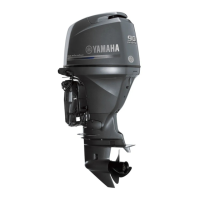Safety information
6
Crossing: (you are traveling across the other
vessel’s path)
Overtaking: (you are passing or being
passed by another vessel)
In the following illustration, your boat is in the
center. You should give the right-of-way to
any vessels shown in white area (you are the
Give-Way vessel). Any vessels in the shaded
area must yield to you (they are the Give-Way
vessels). Both you and the meeting vessel
must alter course to avoid each other.
Meeting
If you are meeting another power vessel head
on, and are close enough to run the risk of
collision, neither of you has the right-of-way
Both of you should alter course to avoid an
accident. You should keep the other vessel
on your port (left) side. This rule doesn’t apply
if both of you will clear one another if you con-
tinue on your set course and speed.
Crossing
When two power driven vessels are crossing
each other’s path close enough to run the risk
of collision, the vessel which has the other on
the starboard (right) side must keep out of the
way of the other. If the other vessel is on your
right, you must keep out of its way; you are
the Give-Way vessel. If the other vessel is on
your port (left) side, remember that you
should maintain course and direction, provid-
ed the other vessel gives you the right-of-way
as it should.
Overtaking
If you are passing another vessel, you are the
“Give-Way” vessel. This means that the other
vessel is expected to maintain its course and
speed. You must stay out of its way until you
are clear of it. Likewise, if another vessel is
passing you, you should maintain your speed
and direction so that the other vessel can
steer itself around you.
EMU25532
Other special situations
There are three other rules you should be
aware of when driving your boat around other
vessels.
Narrow channels and bends
When navigating in narrow channels, you
should keep to the right when it is safe and
practical to do so. If the operator of a power-
driven vessel is preparing to go around a
bend that may obstruct the view of other wa-
U6D63EE0.book Page 6 Friday, December 12, 2014 9:39 AM
©2019 Yamaha Motor Corporation, U.S.A.

